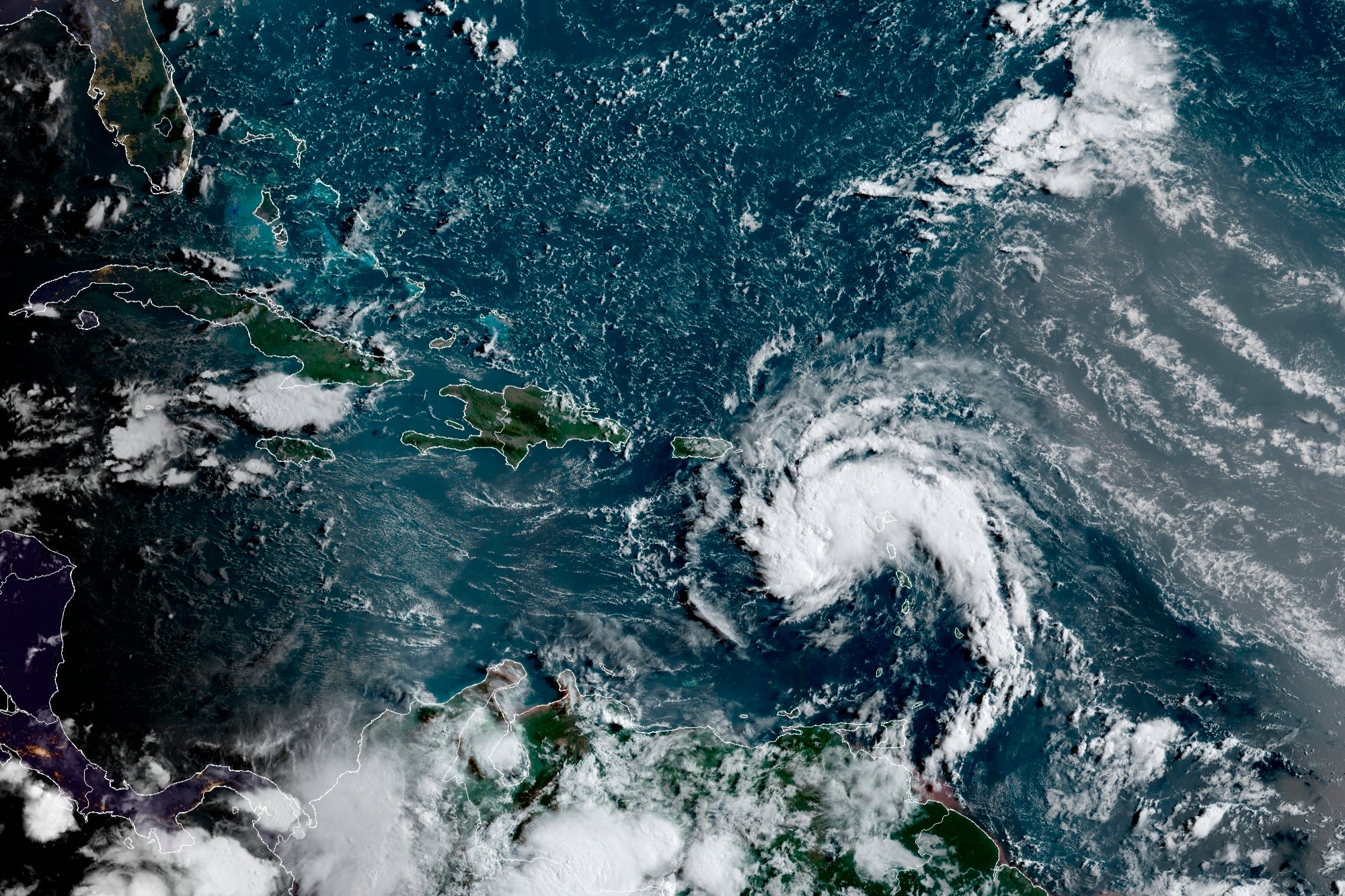Tropical storm forms near Puerto Rico, heads for Hispaniola
Tropical Storm Fred is swirling just south of Puerto Rico heading for the Dominican Republic and Haiti, with forecasters warning that its heavy rains could cause dangerous flooding and mudslides

Your support helps us to tell the story
From reproductive rights to climate change to Big Tech, The Independent is on the ground when the story is developing. Whether it's investigating the financials of Elon Musk's pro-Trump PAC or producing our latest documentary, 'The A Word', which shines a light on the American women fighting for reproductive rights, we know how important it is to parse out the facts from the messaging.
At such a critical moment in US history, we need reporters on the ground. Your donation allows us to keep sending journalists to speak to both sides of the story.
The Independent is trusted by Americans across the entire political spectrum. And unlike many other quality news outlets, we choose not to lock Americans out of our reporting and analysis with paywalls. We believe quality journalism should be available to everyone, paid for by those who can afford it.
Your support makes all the difference.Tropical Storm Fred swirled just south of Puerto Rico early Wednesday heading for the Dominican Republic and Haiti with forecasters warning that its heavy rains could cause dangerous flooding and mudslides.
After a quiet month of no named storms in the region, Fred became the sixth of the Atlantic hurricane season as expected late Tuesday and tropical storm warnings were already in effect for the U.S. Virgin Islands and Puerto Rico.
“The most important thing today is preparation,” said Puerto Rico Gov. Pedro Pierluisi. “I am not going to minimize the potential impact of this event ... we expect a lot of rain.”
Rains pelted the northern Caribbean and power outages were reported in Puerto Rico, where Luma, the company in charge of the U.S. territory’s transmission and distribution system, warned those who depend on electricity for life-saving medical devices to activate emergency plans.
“Puerto Rico’s system ... continues to be very fragile,” the company said, referring to a power grid that was razed by Hurricane Maria in September 2017.
Fred was centered was centered 45 miles (70 kilometers) south-southwest of Ponce, Puerto Rico, late Tuesday and moving west at 17 mph (28 kph), the U.S. National Hurricane Center said. It had maximum sustained winds of 40 mph (65 kph).
The Dominican Republic, Haiti and the southern Bahamas could get hit Wednesday, and people in Florida were urged to monitor updates, but forecasters said it remained uncertain where the storm would move later in the week.
Pierluisi said government agencies in Puerto Rico would close and officials noted that some gas stations had shut down after running out of fuel. The heaviest rain was expected to fall during the night, forecasters said.
Eight shelters were opened across the island, though officials said only about seven people had checked in by midevening.
“Do not wait until the last minute to mobilize,” said Nino Correa, Puerto Rico's emergency management commissioner. “We don't want to have fatalities.”
More than a month had passed since the last Atlantic storm, Hurricane Elsa, but this time of summer usually marks the start of the peak of hurricane season.
The hurricane center issued warnings for Puerto Rico, the U.S. Virgin Islands and the Dominican Republic on the south coast from Punta Palenque eastward and on the north coast from Cabo Frances Viejo eastward. A watch was in effect for Hispaniola's north coast, from Cabo Frances in the Dominican Republic to Gonaives, Haiti.
The storm was expected to produce rainfall of 2 to 4 inches (5 to 10 centimeters) over Puerto Rico with up to 6 inches (15 centimeters) in some areas.